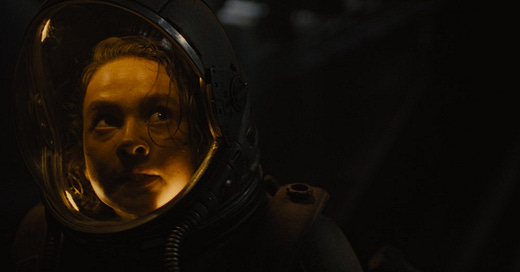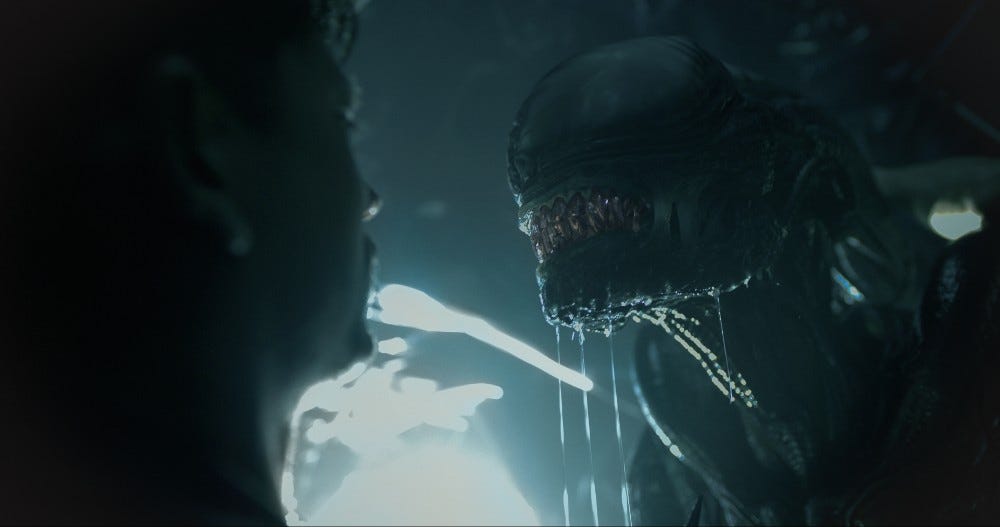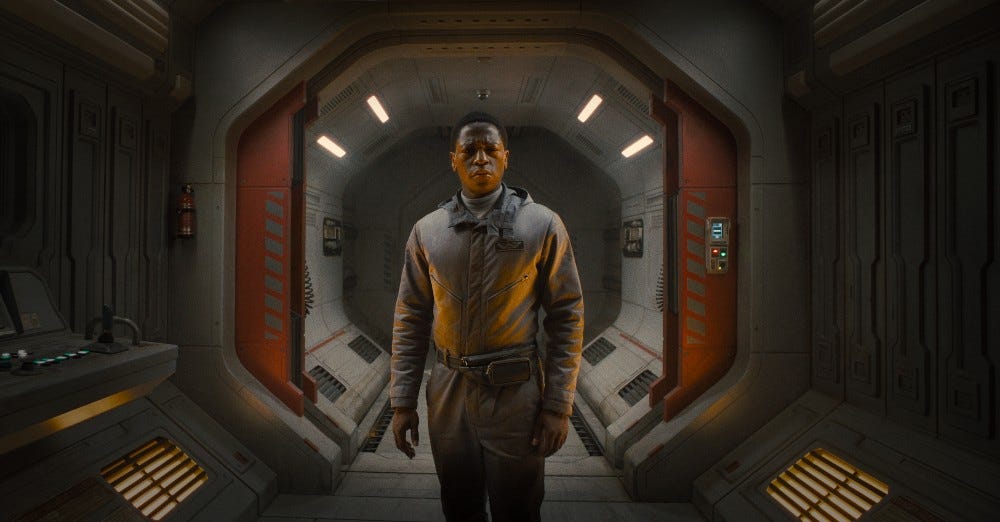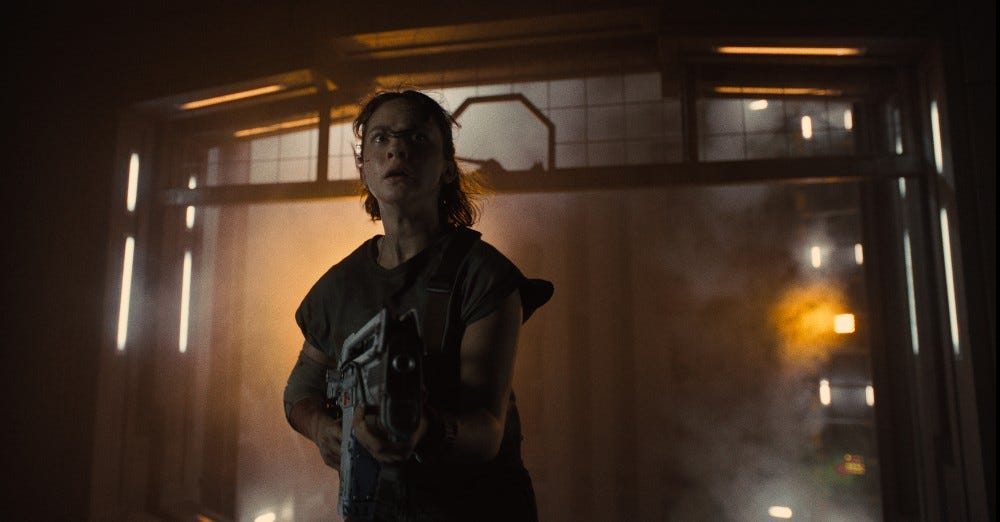ALIEN: ROMULUS REVIEW
A huge sci-fi spectacle worthy of being put in the “win” column for this long-storied franchise.
If you were not aware, the original Alien is one of my all-time favorite movies, possibly in my top 20 or 30 movies, in fact. I generally love the franchise and the simplicity of its premise, based around progressively more deadly alien creatures and their gory kills. Unlike the sheep, I also loved both of Ridley Scott’s last two movies, Prometheus and Alien: Covenant, and had trouble understanding why more people didn’t love them as much I did, since it was the first time someone tried to do something completely different with the material, while also trying to explain the xenomorph’s origins.
With all the legacy sequels doing so well in recent years, often decades after previous installments, it made sense to bring in some new blood in filmmaker Fede Álvarez (Don’t Breathe, Evil Dead) to resuscitate the franchise while also bringing it back to its roots.
We meet Cailee Spaeny’s Rain when she’s working as an indentured servant on a mining colony, always accompanied by her protective synthetic “brother” Andy (David Jonsson). Desperate to get out of there, they join a group of ragtag acquaintances, they decide to travel to a nicer planet years away, but first, they need to “borrow” some Cryo-Pods from a large Weyland-Yutani satellite. That’s when they begin to encounter the deadly space creatures we know and love, and everything goes wrong.
We’re going to do our best here to avoid spoilers here, although if you’ve seen a single previous “Alien” movie, you’re well aware that many of these characters are going to die, and you can probably figure out which ones and even how. Alien: Romulus goes for a similar slow-burn ala the original Alien, and that’s a lot harder to do nowadays when you know so much about the mythology already. The problem is that we already know what a Facehugger and Chest-Burster and Xenomorph can do, but the characters in the movie do not, so we basically have to watch them react to the inevitable.
You see, that is probably why I love Prometheus and Alien: Covenant so much, since Ridley Scott really tried to throw in some original ideas and locations in order to help evolve the franchise, while clearly, the fans and critics just wanted the same thing over and over. In that sense, Álvarez rolls thing back to give fans more of what they want, but also making the entire cast younger in hopes it might nterest younger moviegoers. It actually might work with both Cailee Spaeny and David Jonsson being. particularly good, though let’s face it, we’re basically talking about typical horror movie tropes here, and few of these characters have the personalities of the characters from either Alien or Aliens.
There’s another decision that is likely to be quite divisive. Because this is essentially a “legacy” sequel, we’re going to see events from other movies referred to, and in one case, there’s an actual character from another “Alien” movie that has a fairly large role in the plot of “Romulus.” It’s something that I still am not sure how I feel about it, since I need more time to parse that decision, probably after a second viewing.
Even so, this is by far Fede Álvarez’s biggest and most accomplished work as a filmmaker, and you can tell that he’s really pushing the boundaries with what can be done with practical gore and visual FX to raise the stakes from previous “Alien” movies. This leads up to an absolutely bonkers third act that harks back to similar WTF moments in Álvarez’s Evil Dead and Don’t Breathe, but also doesn’t completely ignore the mythology added by Sir Ridley in his more recent films.
The real superstar on Álvarez’s team has to be production designer Naaman Marshall (from M. Night Shyamalan’s “Servant”), who works with his art team to create spaceships, worlds and even computer display graphics that keep “Romulus” firmly in that time period between Scott’s 1979 movie and James Cameron’s ‘80s sequel. The evolution of the creature design, obviously using more visual effects than were available in 1979, is also quite grand.
Another clear MVP is the score by Benjamin Wallfisch, who seems to be on a run of legacy sequels, this one following up his scores for Blade Runner 2049 and Twisters. I watched the movie in a Dolby theater, the blend of absolutely deafening sound with the use of silence doing so much to enhance every scene, although I will admit that some of the characters’ accents made it hard to understand the dialogue amidst all of that.
Alien: Romulus has its fair share of relatively small issues, since it’s trying so hard to maintain everything the fans like about those first two movies without ever coloring too far outside the lines, but also making things original. There’s also certainly a lot to process, but as someone who has been hoping for an “Alien” movie that returns to the franchise’s roots, I wasn’t disappointed, despite any so-called issues. The results are a huge sci-fi spectacle worthy of being put in the “win” column for this long-storied franchise.
Rating: 7.5/10
Alien: Romulus opens on Friday, August 16, with the usual previews on Thursday night.






